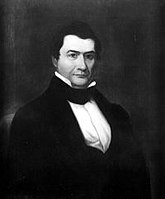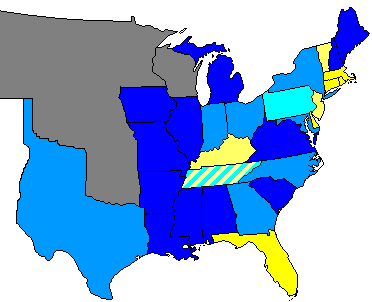This article includes a list of references, related reading, or external links, but its sources remain unclear because it lacks inline citations .(February 2013) |
| 29th United States Congress | |
|---|---|
28th ← → 30th | |
 United States Capitol (1846) | |
March 4, 1845 – March 4, 1847 | |
| Members | 58 senators 228 representatives 2 non-voting delegates |
| Senate majority | Democratic |
| Senate President | George M. Dallas (D) |
| House majority | Democratic |
| House Speaker | John W. Davis (D) |
| Sessions | |
| Special [a] : March 4, 1845 – March 20, 1845 1st: December 1, 1845 – August 10, 1846 2nd: December 7, 1846 – March 3, 1847 | |
The 29th United States Congress was a meeting of the legislative branch of the United States federal government, consisting of the United States Senate and the United States House of Representatives. It met in Washington, D.C. from March 4, 1845, to March 4, 1847, during the first two years of James Polk's presidency. The apportionment of seats in the House of Representatives was based on the 1840 United States census. Both chambers had a Democratic majority.
Contents
- Major events
- Major legislation
- Treaties
- States admitted
- Party summary
- Senate
- House of Representatives
- Leadership
- Senate 2
- House of Representatives 2
- Members
- Senate 3
- House of Representatives 3
- Changes in membership
- Senate 4
- House of Representatives 4
- Committees
- Senate 5
- House of Representatives 5
- Joint committees
- Employees
- Senate 6
- House of Representatives 6
- See also
- Notes
- References
- External links






